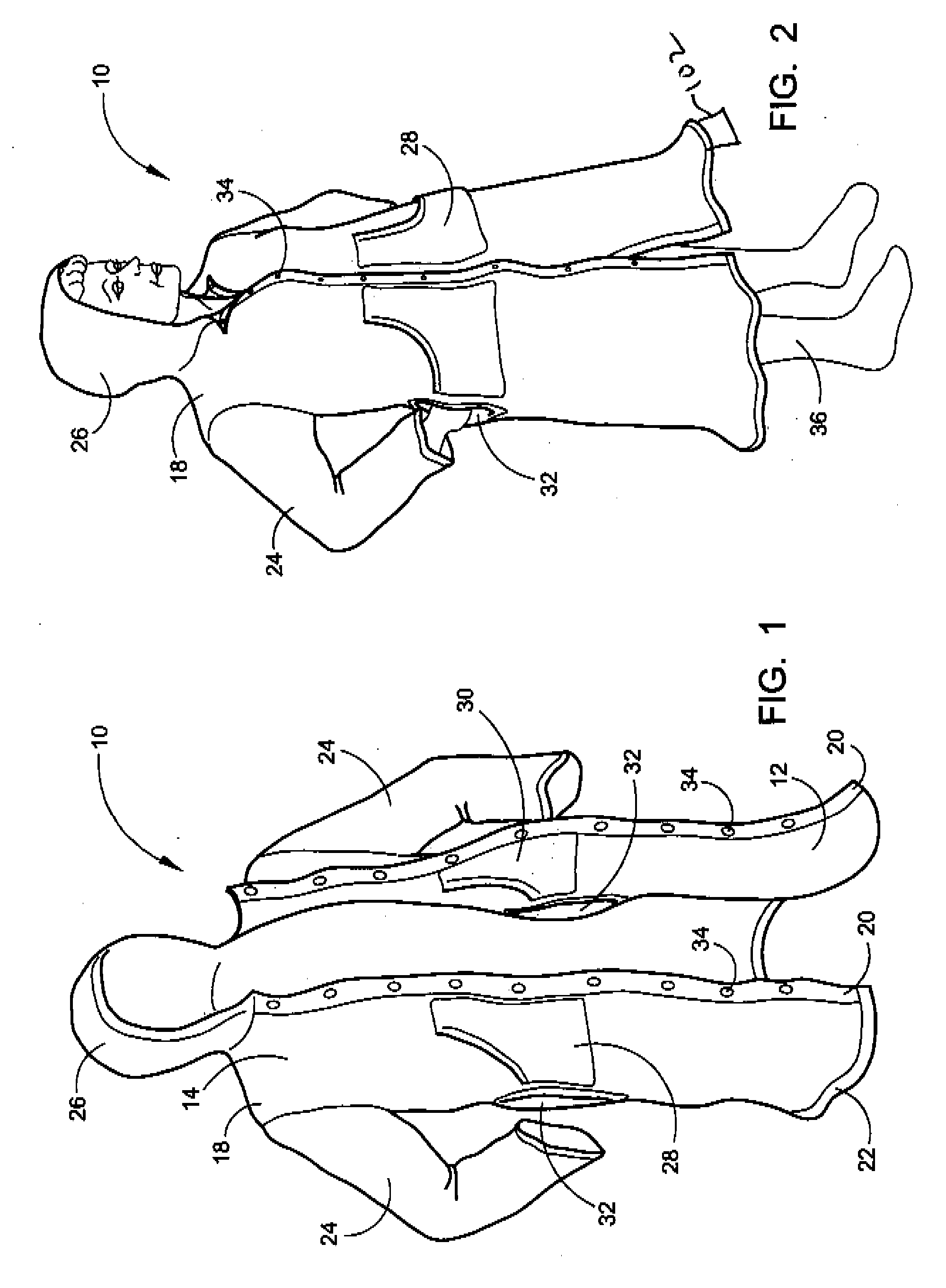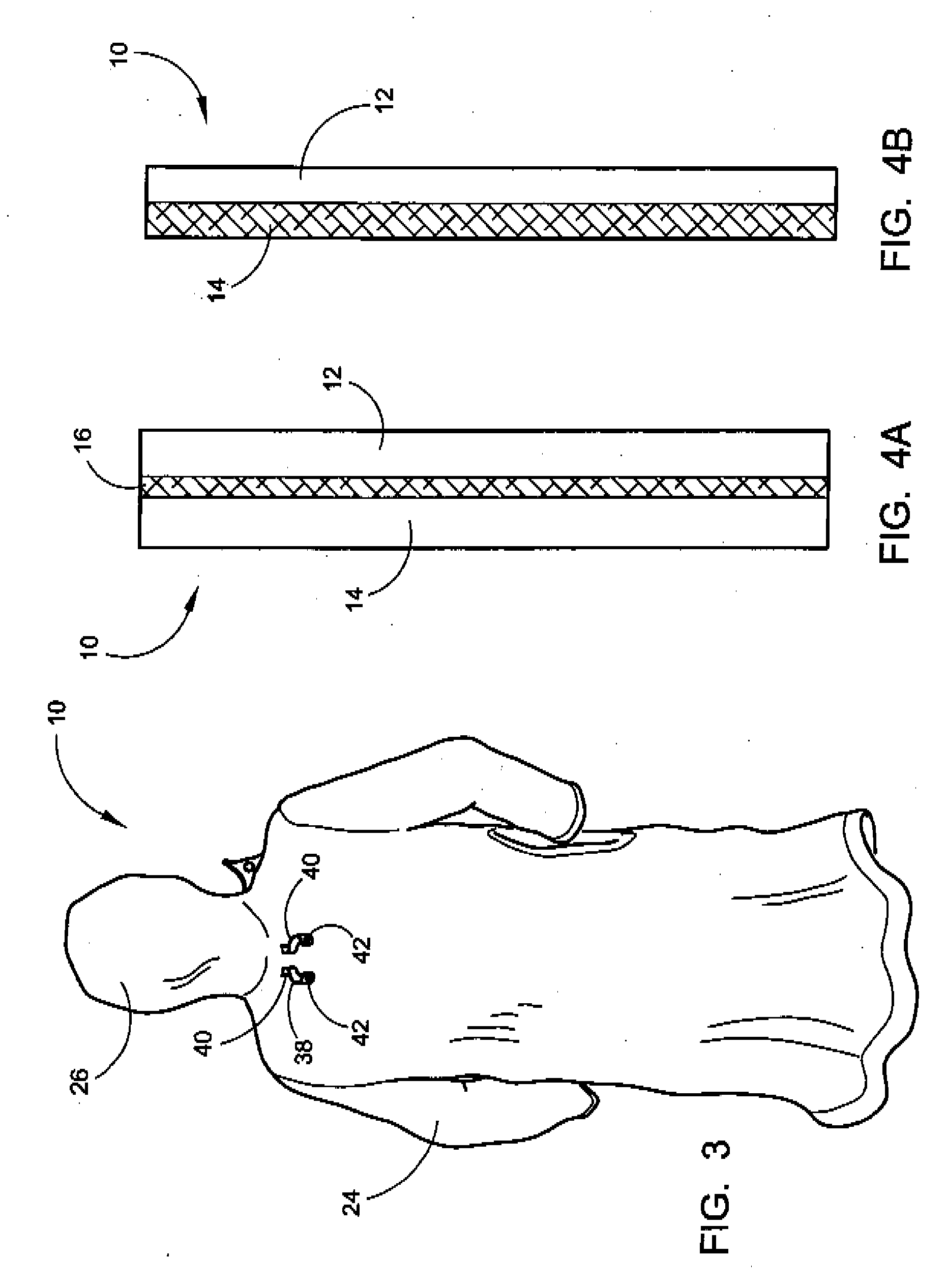Wearable protective changing garment
a technology of protective clothing and changing garments, which is applied in the field of reversible clothing, can solve the problems of inability to wear protective clothing, inability to provide public facilities or private changing rooms, and inability to change clothes in public facilities, so as to facilitate the placement of the garment on the wearer and facilitate the placement of the wearer's hands
- Summary
- Abstract
- Description
- Claims
- Application Information
AI Technical Summary
Benefits of technology
Problems solved by technology
Method used
Image
Examples
Embodiment Construction
[0019] Referring now to the drawings, wherein similar parts are identified by like reference numerals, there is seen in FIG. 1 a front view of a wearable protective changing garment 10, with a partially exposed interior region. In a non-limiting embodiment, the wearable protective changing garment 10 contains an interior layer 12 and a surrounding exterior layer 14. The interior layer 12 and exterior layer 14 can be separated by a dividing layer 16 (see FIG. 4A). The interior layer 12, exterior layer 14, and dividing layer 16 can all be contained within one type of fabric or material having three separate layers, or can each be separate layers of fabric sewn or otherwise combined together to form a continuous piece of material.
[0020] In the first embodiment, the interior layer 12 and exterior layer 14 can be made of a substantially water absorbent biocompatible material such as terry cloth, cotton, or other water absorbent material as would be deemed suitable by one with ordinary s...
PUM
 Login to View More
Login to View More Abstract
Description
Claims
Application Information
 Login to View More
Login to View More - R&D
- Intellectual Property
- Life Sciences
- Materials
- Tech Scout
- Unparalleled Data Quality
- Higher Quality Content
- 60% Fewer Hallucinations
Browse by: Latest US Patents, China's latest patents, Technical Efficacy Thesaurus, Application Domain, Technology Topic, Popular Technical Reports.
© 2025 PatSnap. All rights reserved.Legal|Privacy policy|Modern Slavery Act Transparency Statement|Sitemap|About US| Contact US: help@patsnap.com



